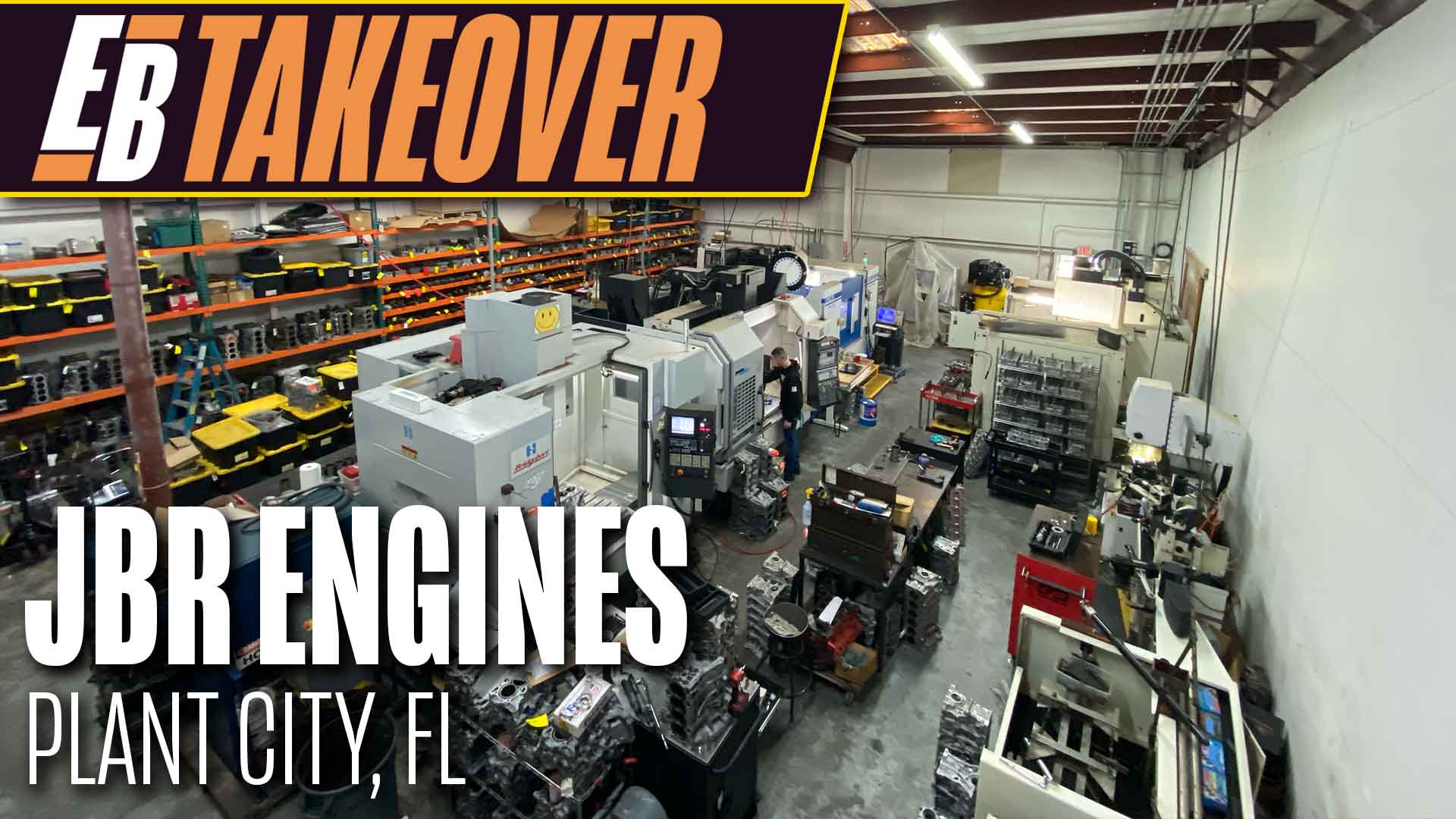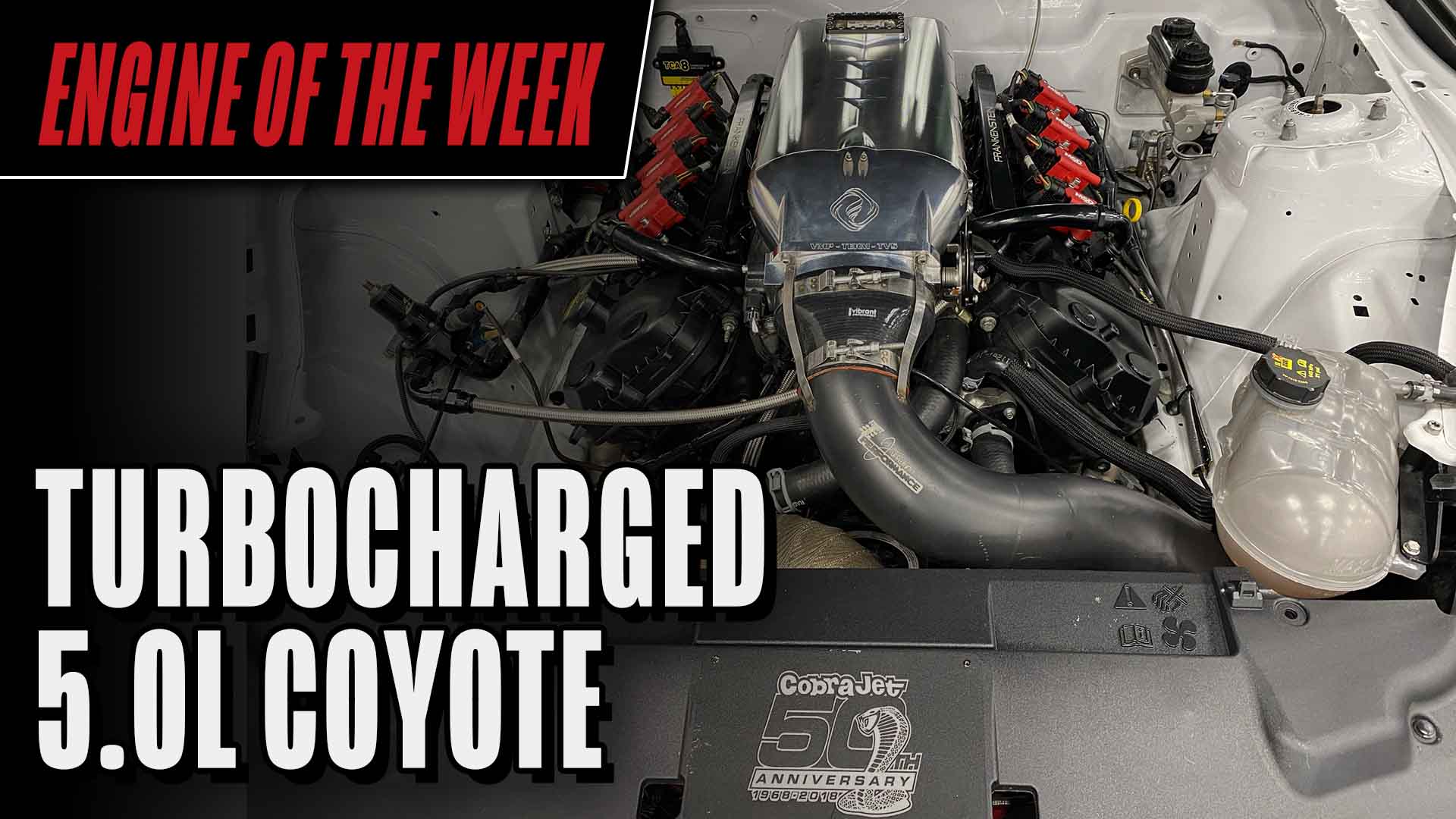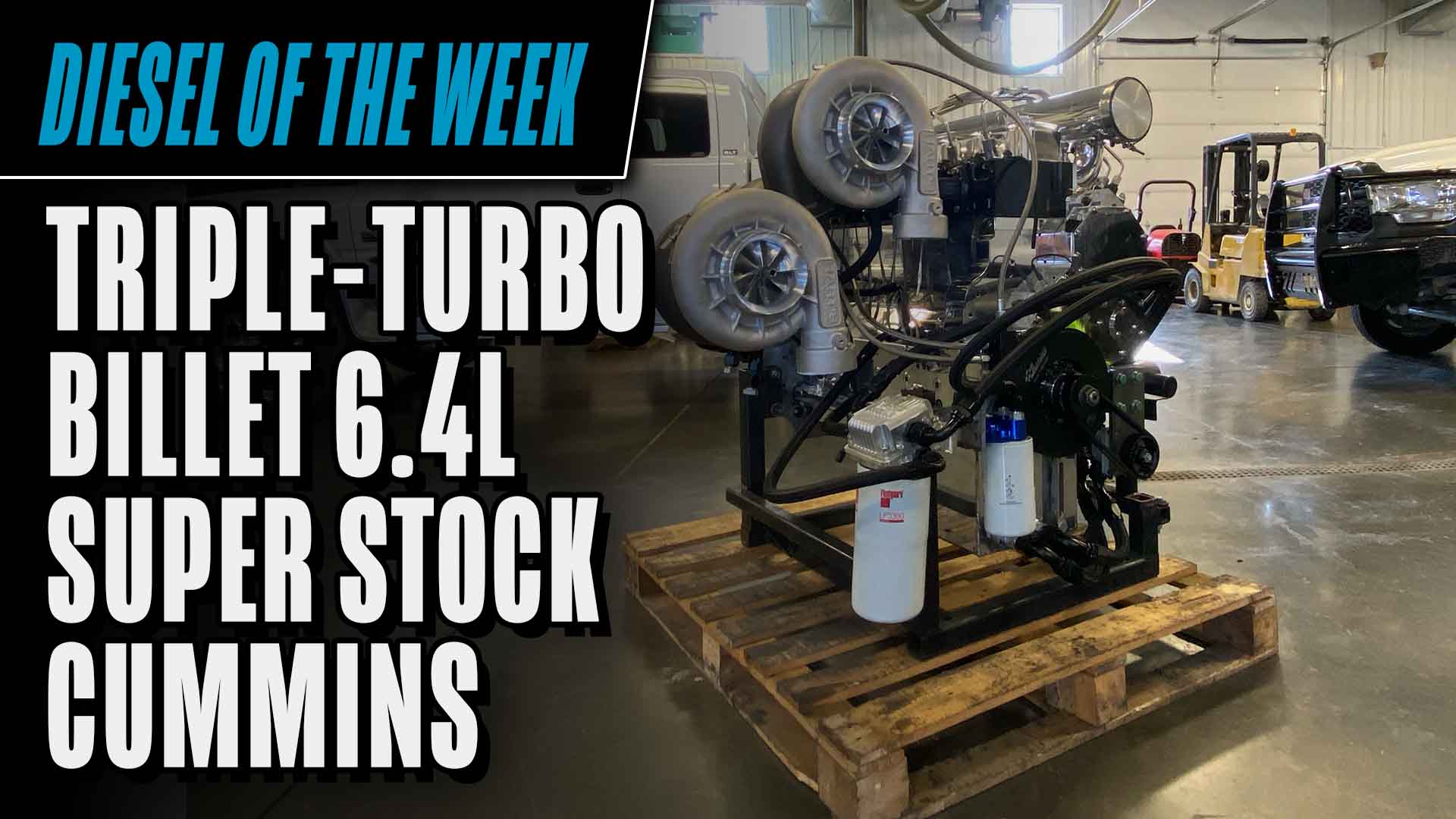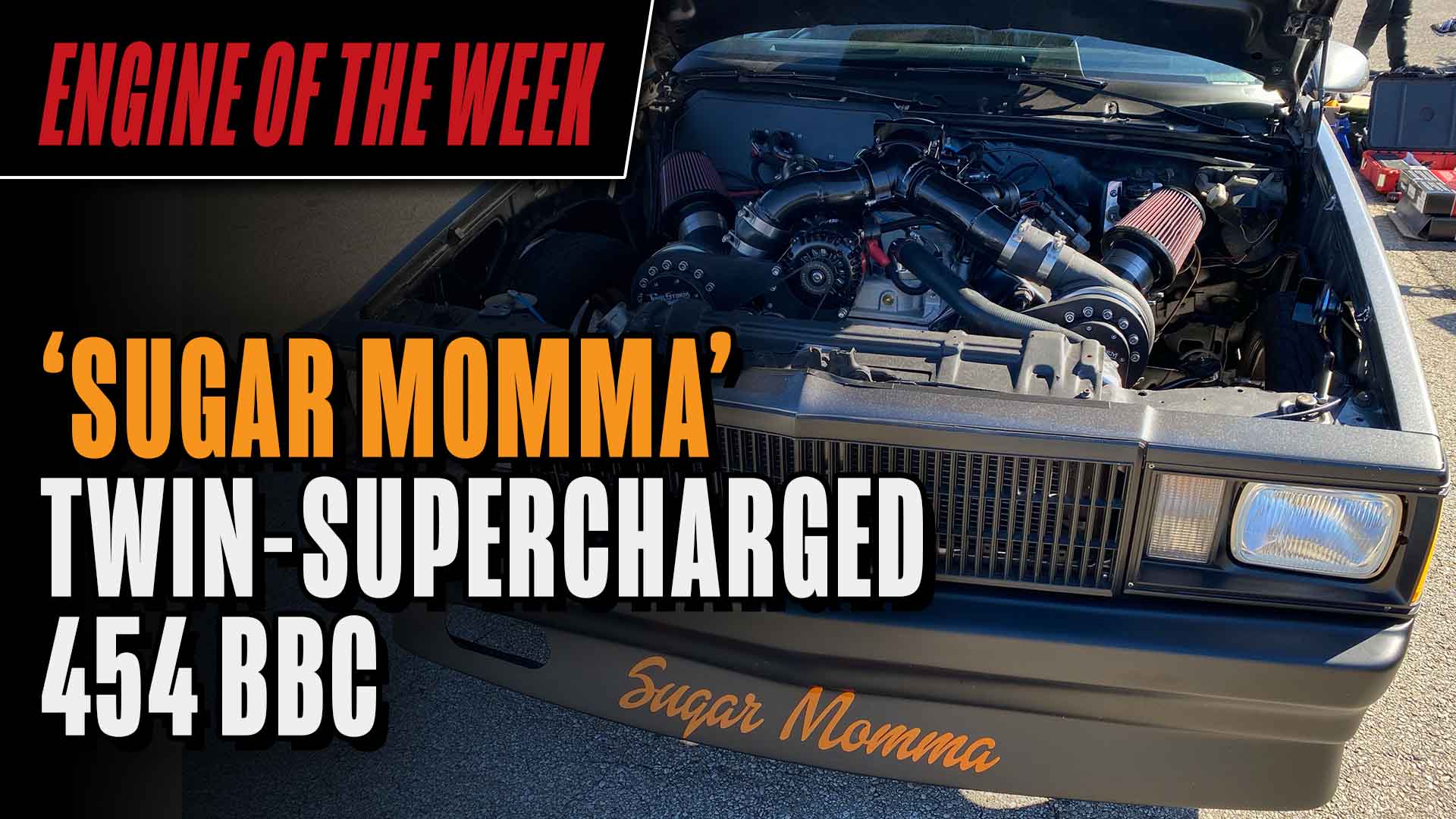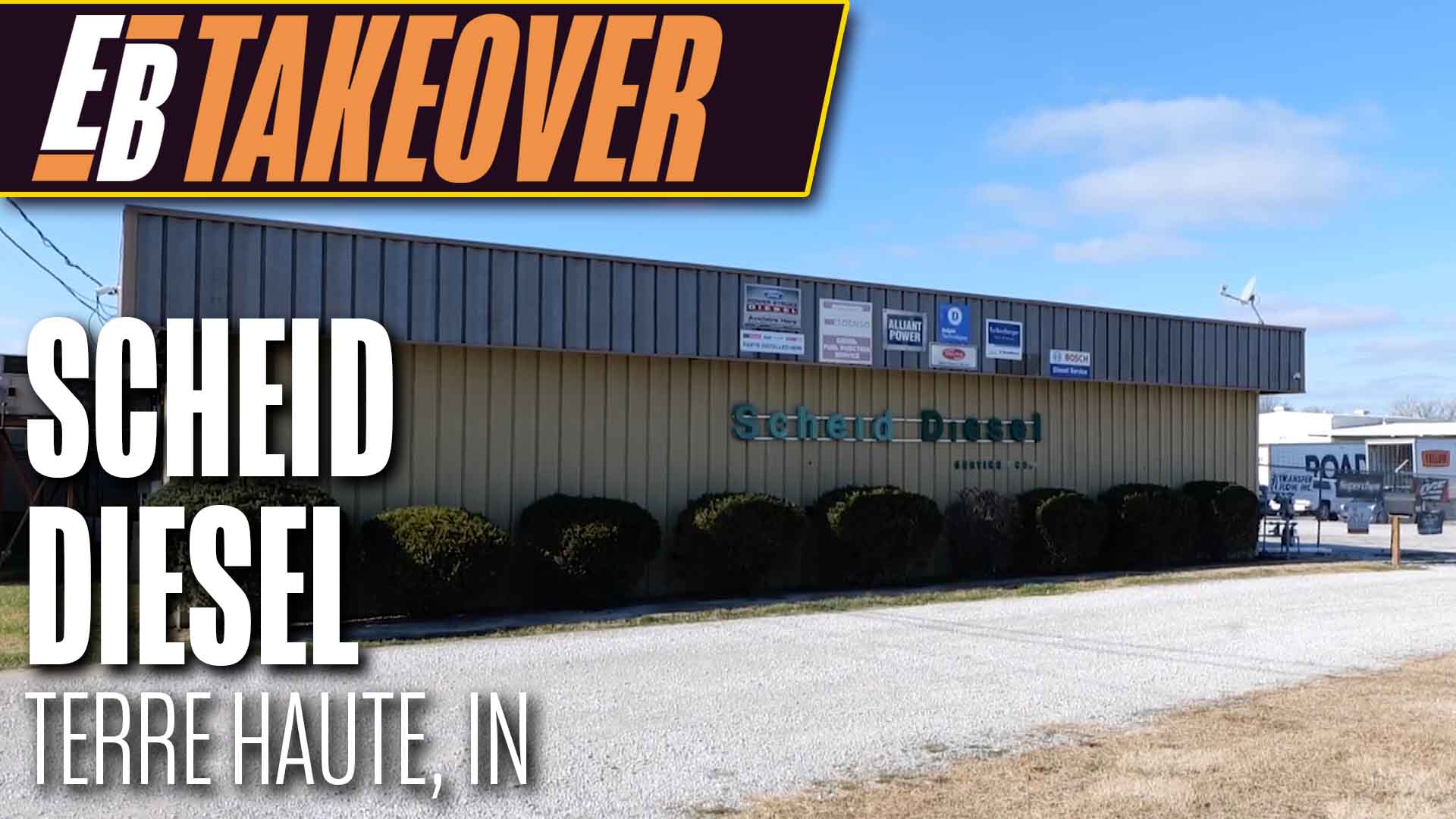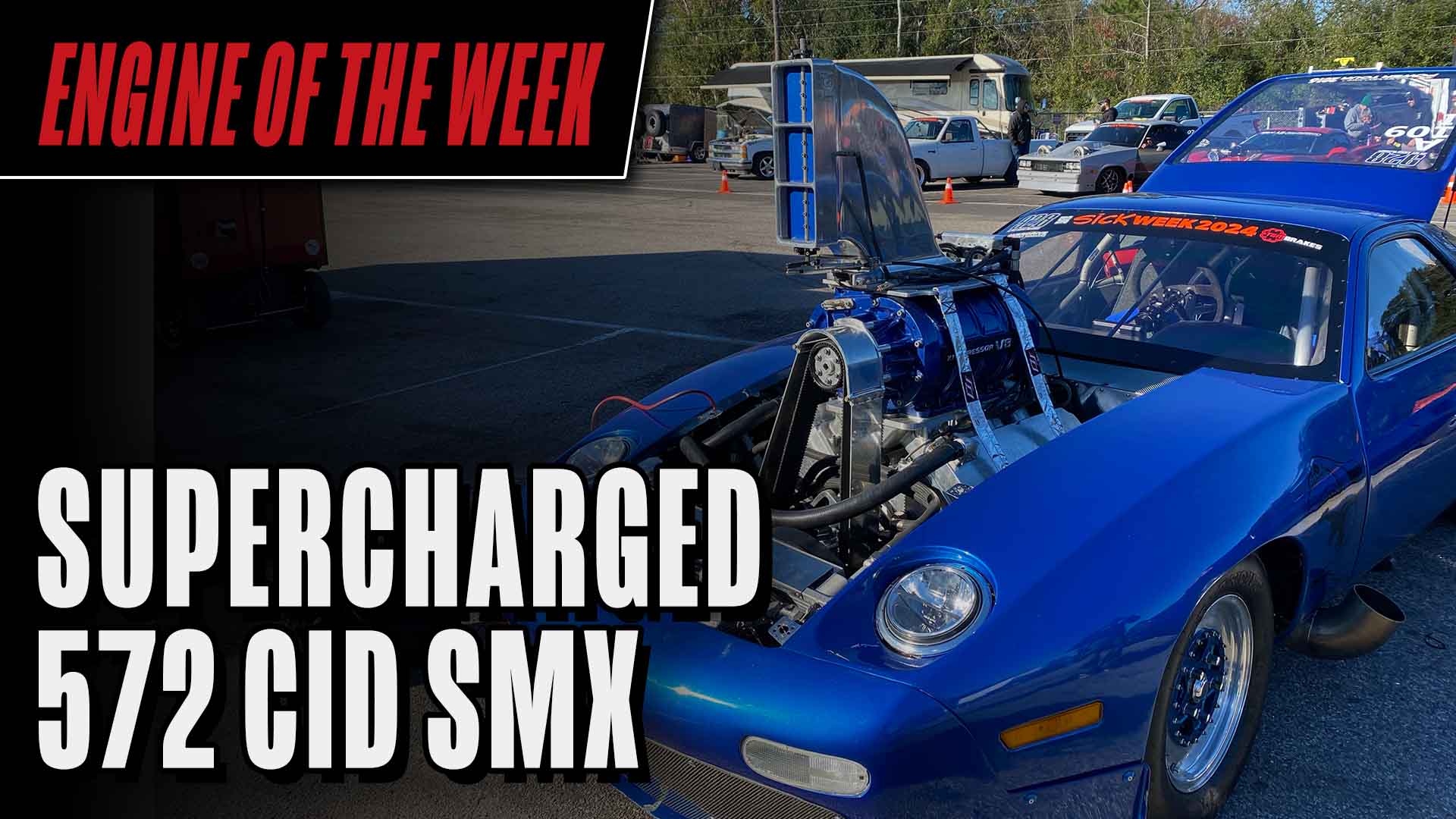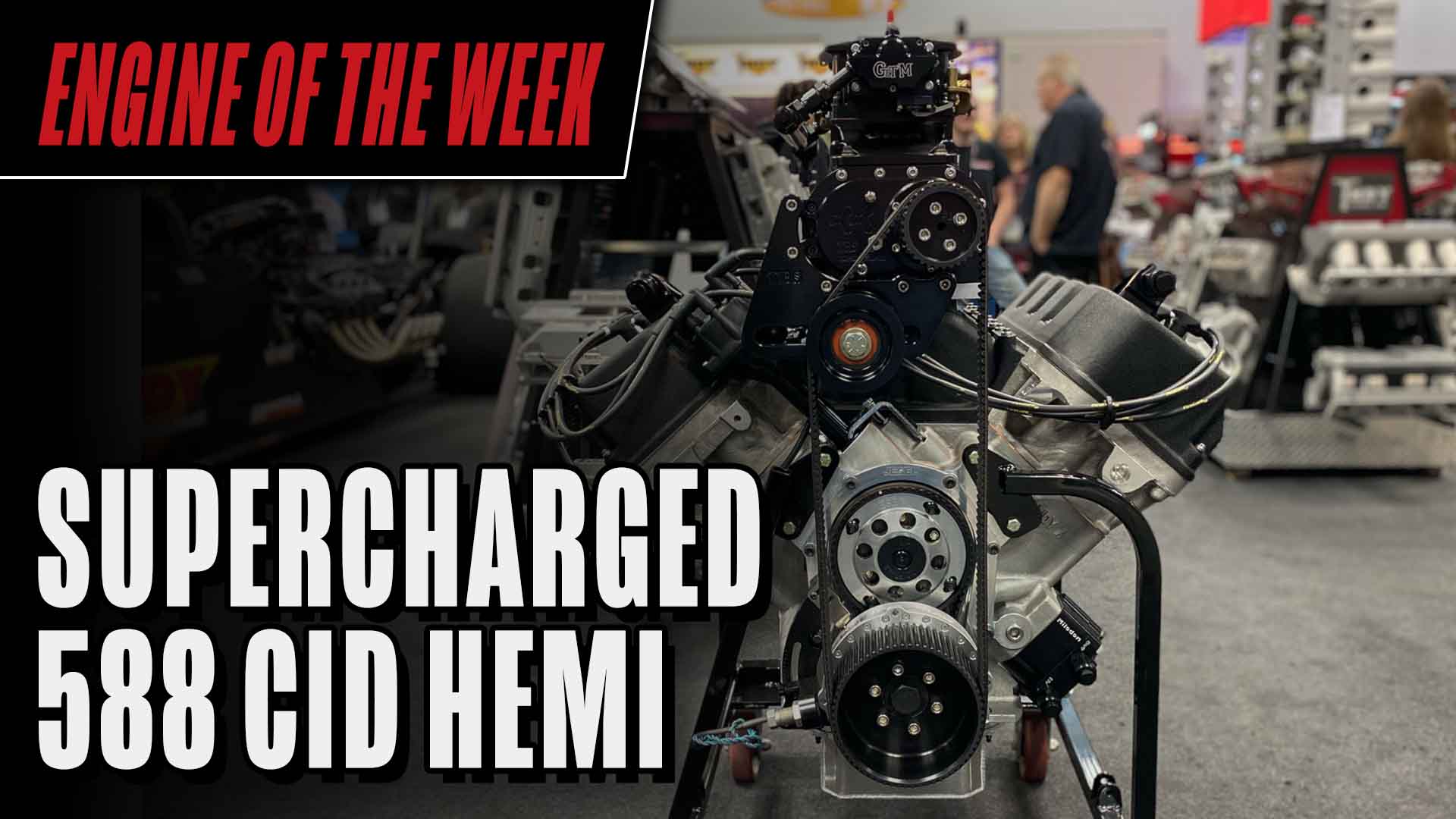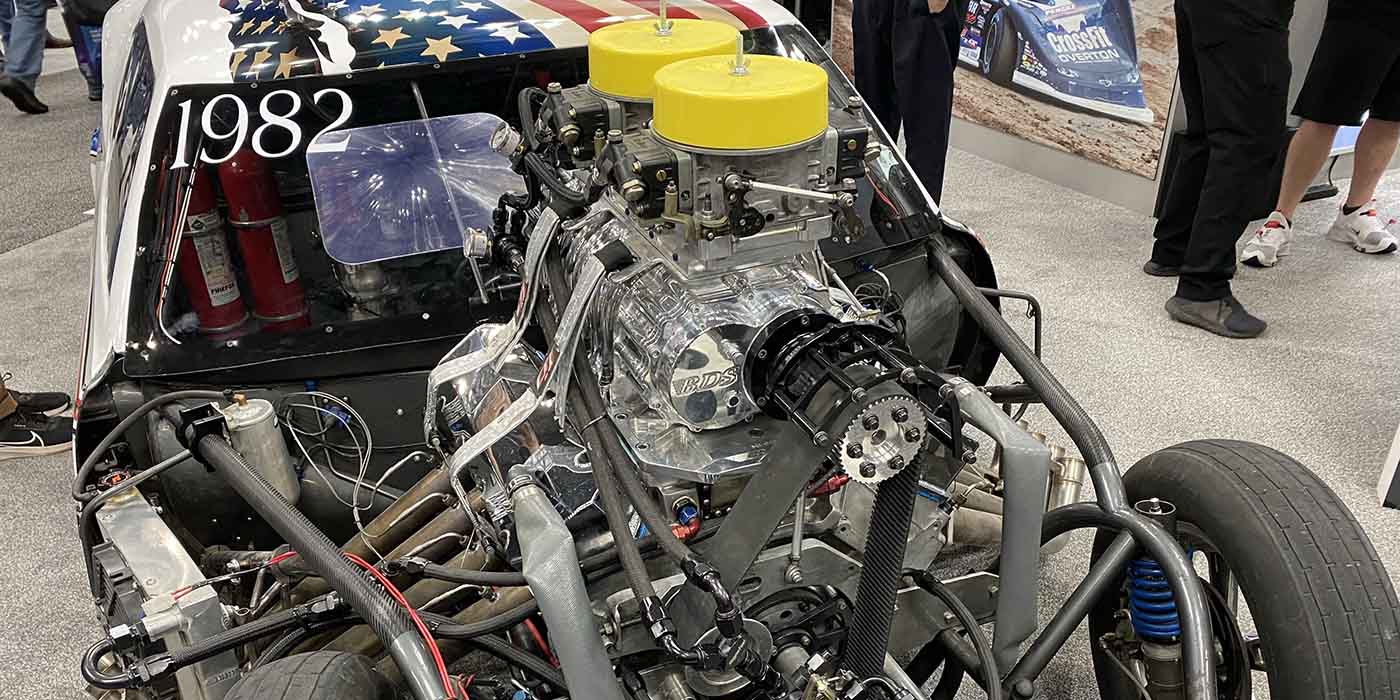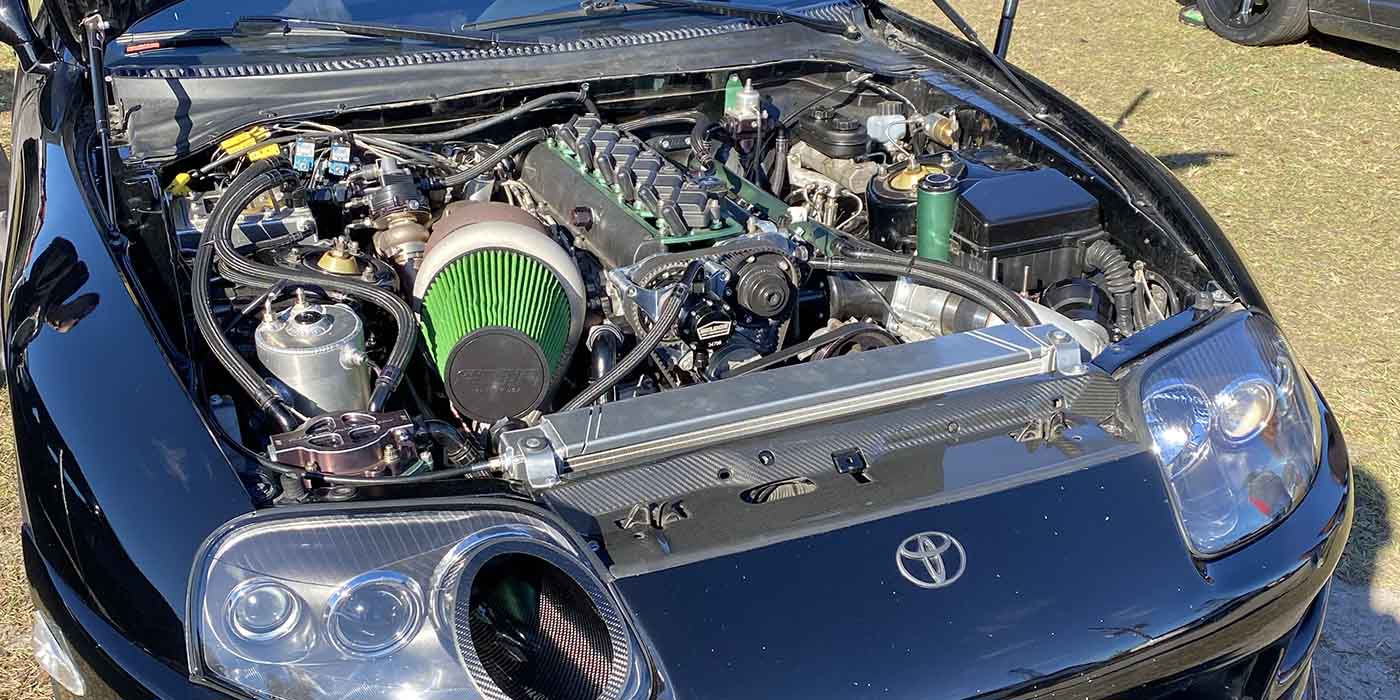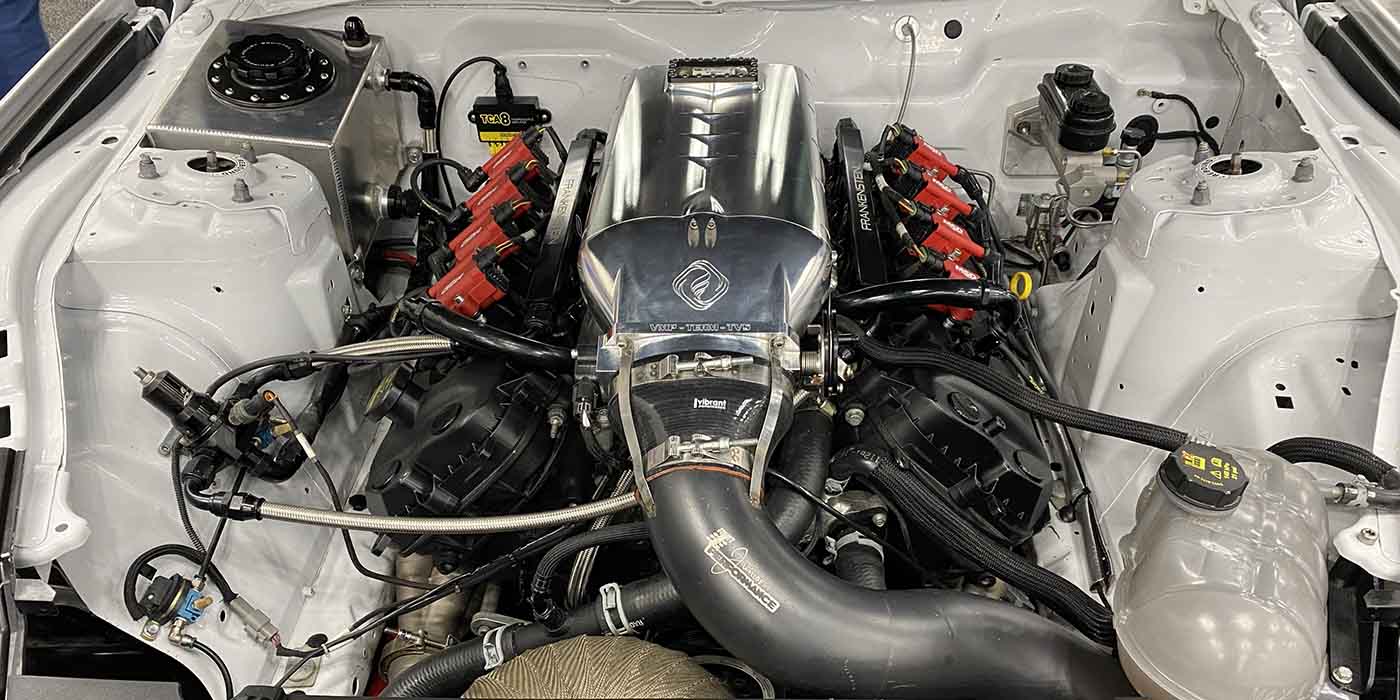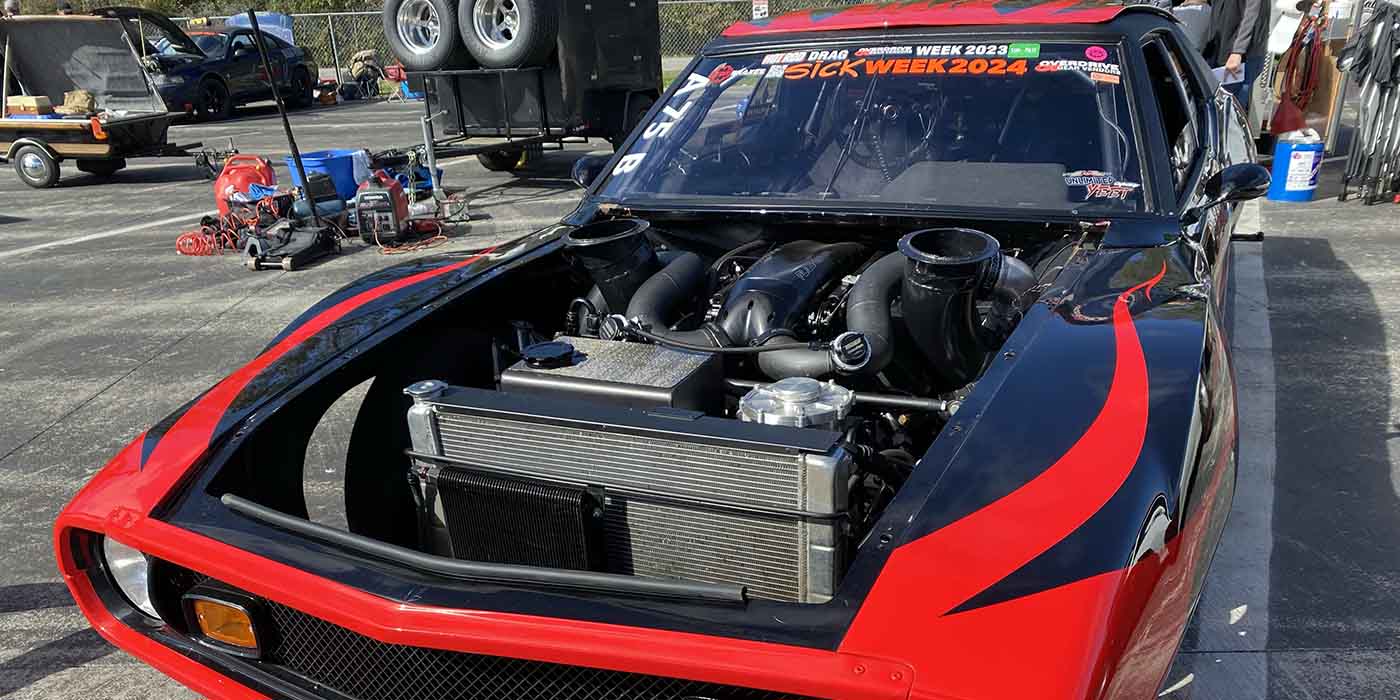Engine of the Week is presented by



In this episode of Engine of the Week, we’re talking about an all-aluminum 535 cu.in. Pontiac engine built by Bill Ceralli of Ceralli Competition Engines for a drag racing application. According to Ceralli, this brand-new build is naturally aspirated, features a single carburetor, an All Pontiac Indian Adventures block and some used All Pontiac Tiger cylinder heads.
“The customer acquired a set of slightly used All Pontiac Tiger heads, which we had originally CNC ported here,” Ceralli says. “The customer bought them from another one of our customers. The All Pontiac Tiger cylinder heads flow about 460 cfm. They’ve got a 2.300˝ intake valve and a 1.800˝ exhaust valve. It has an intake manifold that’s an All Pontiac Tiger manifold that has been extensively ported by CFM South. The engine will also have a carburetor from Dale Cubic, and that’s going to have a 2.400˝ throttle blade.
“The aluminum block comes with approximately a 4.180˝ roughed out cylinder, so we had to bore and hone it to 4.350˝. We had to deck the block with a smooth finish for the MLS gaskets. We had to install lifter bushings and finish-hone the lifter bushings to .0015˝-.0019˝.”
Ceralli is also running a wet deck on this engine. According to him, some of the Pontiac community tends to run a dry deck scenario where they don’t run water between the heads and block, but that’s not his preference.
“My preference is to run the water between the heads and the block and not restrict it away from the two hot areas right in the center where there are exhaust valves,” he says. “I think the wet deck is a better system for an engine that has two exhaust valves next to each other right in the center of the engine.”
This 535 Pontiac has a 55-millimeter cam barrel and the camshaft was ground by LSM Systems Engineering in Michigan.
“They do the grinding, we provide the specs,” he says. “This particular cam is 283 @ 50 on the intake and 304 @ 50 on the exhaust. It’s on a 117 lobe center and the lift numbers are 1.014 on the intake and .897 on the exhaust.”
The engine uses a billet crankshaft, aluminum rods and CP pistons with a Total Seal ring package. It has 1.95-inch intake rockers and 1.85-inch exhaust rockers, uses a Jesel valvetrain system, Isky 904 EZ-Roll lifters, Manton 7/16ths and 3/8ths pushrods, custom head gaskets, King engine bearings, a dry sump oiling system with a Moroso two-piece oiling pan, Manley valve springs, and an ATI damper.
Fully complete, Ceralli’s new customer walked out the door with a brand new, all-aluminum, 535 Pontiac engine that pumps out 1,050 horsepower with a 15.5 to 1 compression ratio. We think he’ll be one satisfied customer!
Well, that does it for this episode of Engine of the Week. Thanks to our sponsors PennGrade, Scat Crankshafts and Elring. Please like, comment and subscribe if you haven’t already. And, if you have an engine you’d like to see featured, please email our editor Greg Jones at [email protected]. Thanks for watching!

